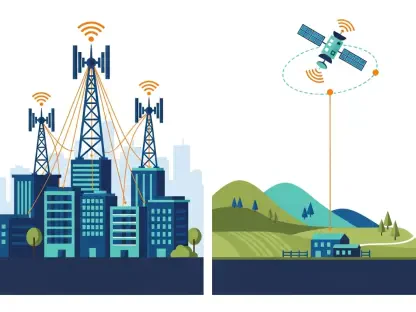In the ever-evolving world of telecommunications, regulations play a crucial role in shaping how industry players strategize and operate. Today, we are joined by Vladislav Zaimov, a seasoned expert in the field of telecommunications. With his expertise in enterprise telecommunications and risk management of vulnerable networks, Vladislav offers invaluable insights into the recent changes in the U.K. telecom landscape, particularly concerning Ofcom’s decisions to adjust license fees for mobile spectrum.
Can you explain the recent changes Ofcom has made to the annual license fees for mobile network operators?
The recent changes by Ofcom are rather significant. Essentially, Ofcom has decided to lower the annual license fees for using the 900 MHz and 1800 MHz spectrum bands, cutting them by 26%. This reduction means operators could potentially save around £60 million annually. These changes come after a detailed public consultation process, and they’re aimed at encouraging more efficient use of the spectrum. Additionally, while the fees for these bands have decreased, the fees for the 2.1 GHz band have actually gone up by 6%.
How did Ofcom determine the new fees for the 900 MHz and 1800 MHz spectrum bands?
Ofcom determined the fees based on what’s known as the forward-looking market value of the spectrum. They look at current usage patterns, demand trends, and technological advancements to assess what these spectrum bands might be worth in the future. During their analysis and after consultation with stakeholders, they found it prudent to adjust the fees downwards for the 900 MHz and 1800 MHz bands to support operators in making substantial investments and enhancing services.
What prompted Ofcom to modify its original proposal after the public consultation?
Ofcom finds significant value in stakeholder input, and it was after reviewing feedback from the consultation that they decided on these particular changes. Stakeholders had opportunities to present evidence and perspectives on spectrum value and usage which were probably factored into refining the original proposals. It appears that the slightly deeper reductions in the 900 MHz and 1800 MHz bands were motivated by desires to foster more investments and innovations among operators.
How will the fee reductions specifically impact mobile network operators in the U.K.?
The reductions are likely to have a multi-layered impact. Financially, operators will have reduced expenditure on spectrum fees, freeing up resources that can be potentially reinvested to bolster infrastructure, expand coverage, or enhance service quality. Strategically, it might enable operators to innovate at a quicker pace or offer more competitive pricing, which in turn benefits consumers.
Why did Ofcom decide to increase the fees for the 2.1 GHz spectrum band?
The increase in fees for the 2.1 GHz spectrum band was driven by similar market value assessments as for the other bands. Despite the reduction in the previous bands, Ofcom found that the 2.1 GHz band held an increased market value, warranting a fee increase by 6%. It’s a delicate balance to predict market conditions and adopt a structure that both promotes efficient use and fair pricing.
Can you elaborate on the potential savings operators might experience with these fee reductions?
With the 26% reduction in the 900 MHz and 1800 MHz spectrum bands, operators stand to save approximately £60 million each year. These savings could be directed towards network advancements, better consumer offerings, or even pricing strategies to increase competitiveness. It’s a notable financial easing that can lead to broader benefits within the telecom ecosystem.
How will these changes affect the overall cost structure for mobile operators?
The cost structure for operators will see a marked shift with reduced operational overheads related directly to spectrum usage fees. This shift could lead to an adjustment in how operators allocate their budgets, possibly enabling more focus on R&D, network resilience, and future-proofing against emerging technologies and competition.
What are the expected benefits of the reduced fees for the 900 MHz and 1800 MHz bands to the telecom industry?
The expected benefits include increased investments in infrastructure, better network quality, and the acceleration of technological adoption. With reduced financial burden, operators might also pursue expanding services to underserved areas, stimulating economic growth and improving connectivity.
How does Ofcom plan to implement the new fee regulations later this year?
Ofcom is set to introduce legal regulations to enact these changes by the end of this year. This involves formalizing the fee reductions and increases through legal frameworks, ensuring compliance across the board for all operators. The goal is seamless implementation so that operators can efficiently transition to the new fee structures.
Could you explain the consultation process for removing upfront payment rules in mobile spectrum trading?
In the consultation process, Ofcom is seeking opinions on removing the upfront payment requirements currently mandatory for spectrum trading. This is geared towards promoting more flexibility and ease in trading activities, by eliminating barriers like premature financial outlays. Stakeholders have until September 2025 to provide their feedback, which Ofcom will consider in finalizing any changes.
What advantages do you foresee with the proposed removal of upfront payment requirements for spectrum trading?
Should these upfront payment requirements be removed, it could significantly enhance liquidity in the spectrum market, allowing for smoother transactions and potentially increased activity. This flexibility might incentivize operators to engage more actively in trading, optimizing their spectrum holdings without being hampered by immediate financial constraints.
What feedback has Ofcom received from stakeholders regarding the spectrum trading changes?
While the consultation is ongoing, initial reactions seem to be cautiously positive. Stakeholders generally support initiatives that promote market flexibility and efficiency. The focus now is on ensuring any potential changes do not inadvertently destabilize the market, or lead to inequities among operators.
How does the fee adjustment align with Ofcom’s goal of promoting efficient spectrum use?
The fee adjustments are directly tied to Ofcom’s mission of fostering efficient spectrum use by ensuring that the pricing accurately reflects market conditions and encourages investment. Lower fees in certain bands reduce the cost burden on operators, allowing them to deploy resources more effectively towards network improvements and efficient spectrum utilization.
Can you discuss the current state of 5G adoption in the U.K.?
5G adoption has been steadily growing, with around 28% of all mobile connections now using 5G. Operators are actively expanding their 5G networks, offering consumers faster speeds and improved services. However, full ecosystem integration is ongoing as consumer devices, network robustness, and operator strategies continue to evolve.
How is the ongoing deployment of 5G Standalone technology progressing in the U.K.?
The deployment of 5G Standalone technology, though still in its early stages with only 2% of connections utilizing it, marks a critical transition in U.K. telecommunications. It’s a dedicated 5G network architecture that enables better technological capabilities. Leading carriers like Vodafone have been at the forefront, setting the pace for others as this infrastructure becomes a cornerstone of next-gen connectivity.
Which U.K. mobile operators are leading in the rollout of 5G Standalone technology?
Vodafone has certainly led the initial charge, having launched its 5G Standalone network back in 2023. Since then, others like O2 and EE have followed suit. This leadership in deployment highlights these operators’ commitment to pioneering advanced network technologies in the U.K., paving the way for improved service offerings and competitive advantages.
How does 5G Standalone technology compare to traditional 5G in terms of performance?
5G Standalone technology offers significant performance improvements over traditional 5G. It provides about 45% faster download times due to its dedicated network architecture, along with reduced latency. This readiness to support futuristic applications like IoT and autonomous vehicle technology distinctly separates it from earlier iterations of 5G.
Could you provide insights into the current market shares of different network technologies among U.K. mobile operators?
Within the U.K. market, EE holds the largest share in 5G connections at 32%, leading the pack. Vodafone, despite having the lowest percentage in 5G at 24%, boasts the highest 4G share at 76%. O2, interestingly, holds the greatest proportion of 3G connections, showing a varying distribution of technological adoption across operators.
How do you see these changes affecting the future development of telecommunications in the U.K.?
The ongoing adjustments in fees and the continuous evolution towards advanced network technologies suggest a progressive future for the U.K. telecom sector. A strategic reallocation of resources, driven by fee alterations and advancing 5G technologies, may herald a more competitive market. Continuous investments and innovations could redefine connectivity, ultimately enhancing service quality and accessibility for the end-users.
Do you have any advice for our readers?
Always stay informed about technological and regulatory changes within the telecom industry. As consumers, these shifts can impact the services you receive and their costs. For those in the industry, adapting quickly and strategically can present opportunities to lead in innovation and service excellence.









